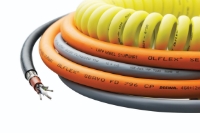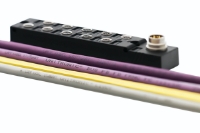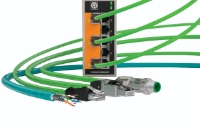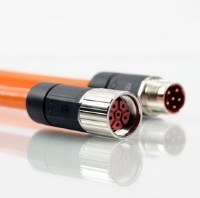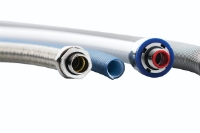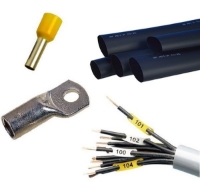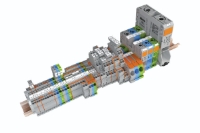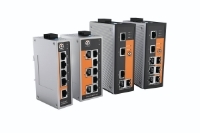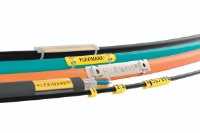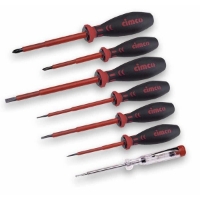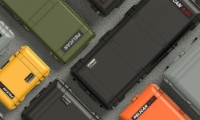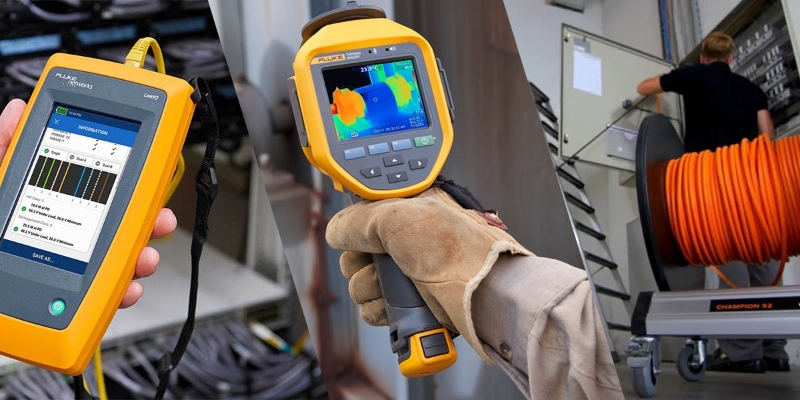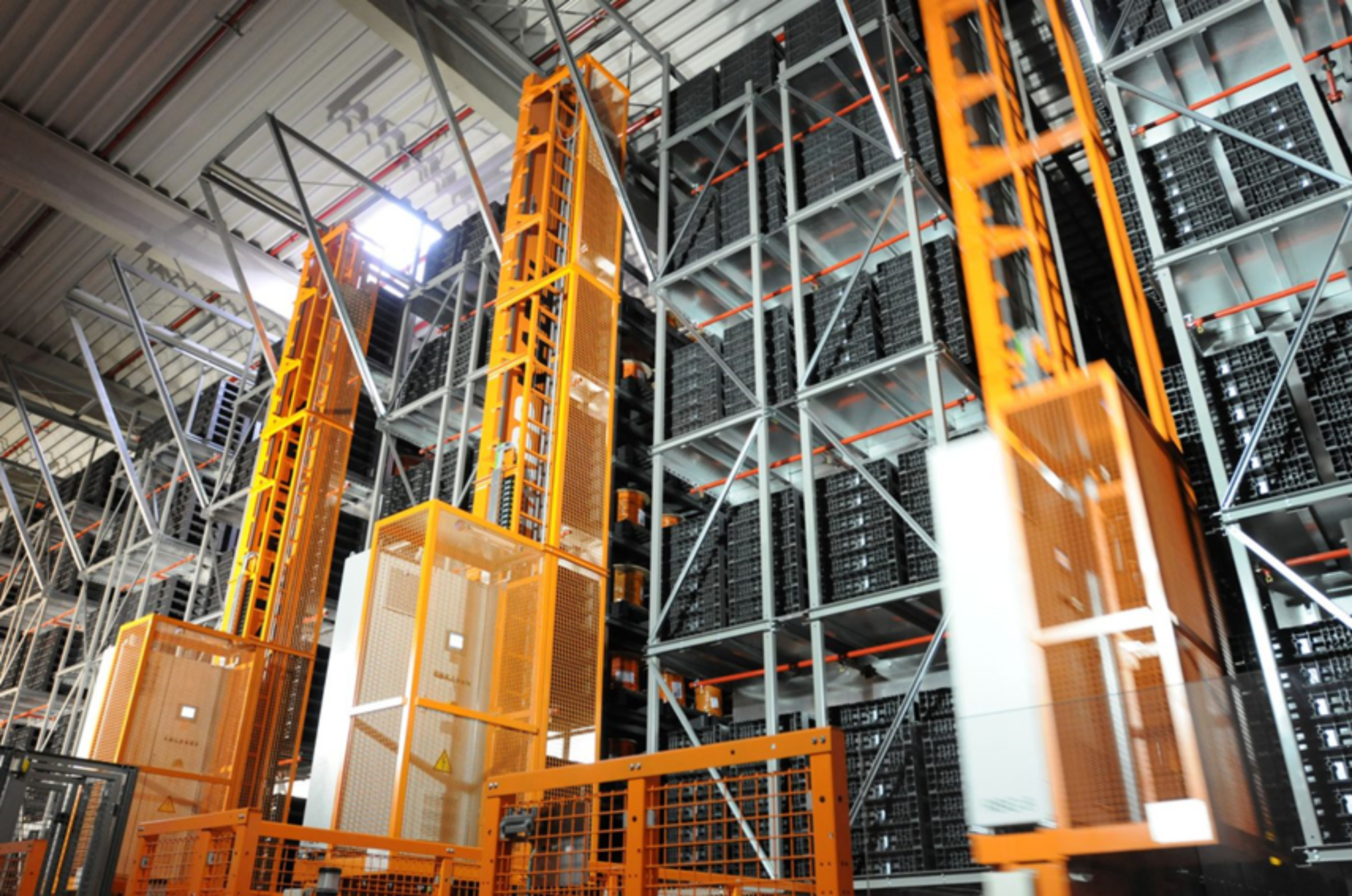LAPP drag chains are used in high-bay warehouses
As long as the traffic is flowing and the shelves are full, the intralogistics sector is rarely in the spotlight. However, by flying under the radar, the significance of the industry can easily be overlooked.
The Australian intralogistics market was valued at AUD $780 million in 2022 and is expected to grow to AUD $2,319 million by 2030. By global comparison, the Asia-Pacific region is the fastest growing region for the freight and intralogistics market.
Intralogistics is essential, in particular, to ensuring that our day-to-day lives, all industries, and many services can operate in the first place. This is because without a functioning flow of raw materials, goods or information, nothing can be produced, communicated, or sold. It is therefore unsurprising that intralogistics is noticed precisely when something goes wrong, for example when a giant freight ship blocks the Suez Canal, work in warehouses is slowed down or even suspended by social distancing or traffic is paralysed by a strike over the consequences of Brexit.
In the future, the cause may be quite different, because especially in the intralogistics sector there is a growing shortage of skilled workers. This is having significant consequences, because without personnel, there are limitations to materials or goods flows.
Smart automated solutions
At LAPP – the leading provider of integrated solutions and branded products in the field of cable and connection technology – intralogistics has been affected by these global trends too. Smart solutions have been implemented in factories across the globe, such as using autonomous forklift trolleys, to relieve employees of some of the repetitive maula tasks.
.png)
Autonomous forklift trolleys can relieve employees
Anyone thinking about the future of large logistics hubs and high-rack warehouses will quickly encounter the topic of automation: self-driving lift trucks, automated conveyor technology and high-rack warehouses, robots that pick appropriate goods just when needed or artificial intelligence that handles all planning processes. The signposts for successful logistics in the future are clearly visible. Demographic change and the accompanying shortage of skilled workers are just two of the drivers of this development.
As a major global leader, LAPP recognised the trends in the sector at an early stage and ranked itself among the most important companies in the sector for the first time in 2023 at LogiMAT, the largest intralogistics trade fair in Europe.
This shows how LAPP solutions enable comprehensive networking of data and processes and increase efficiency and transparency in intralogistics. The industrial-grade, robust, and high-quality components for networking transfer data and power reliably. For cross-level communication between the various network participants, LAPP has smart solutions for the leading protocol standard PROFINET and all other standards. There is a particular demand for solutions for the increasing number of high-rack warehouses, which are growing in height due to an increasing lack of space. With the ÖLFLEX® CONNECT CHAIN, LAPP offers fully assembled cable chain systems that can be tailored precisely to the needs of customers. This applies both to applications requiring torsion and movement.
Data cables for logistics processes
For industrial data communication, LAPP has high-quality industrial cables in its portfolio with its HITRONIC® fibre optic cables and ETHERLINE® data cables, which enable reliable data communication in automated logistics systems. In addition, LAPP supports the integration of robotics and cobots into logistics processes. With special cables and connectors, these machines can be seamlessly integrated into the logistics environment. In this way, repetitive tasks can be automated. This eases the burden on human labour.
Future technologies also deployed at LAPP
At LAPP, these questions also play a major role in all future projects, as well as in the minds of employees, since the Stuttgart-based company will be expanding its own logistics centre in Ludwigsburg over the coming months and bringing it up to date with the latest technology.
However, in LAPP’s planning, it appears more likely that collaboration between people and robots and the use of other future technologies will increasingly become a matter of course rather than replacing our employees with machines. By optimising processes, LAPP uses its own products and solutions to ensure that the current shortage of professionals does not affect its own delivery capacity.
Basically, the conversion and expansion will allow LAPP to achieve significantly more warehouse capacity and increase its availability and throughput speed on site. This means that we will be able to supply all our customers as rapidly as they need. A modern IT system also reduces the error rate and, in the best case scenario, ensures that less waste is generated in the logistics centre.
And this is just the beginning. In the future, intelligent technologies will make it possible to support what we call “best agers” with age-appropriate work concepts.
.png)
The logistics centre of LAPP in Ludwigsburg
This means, for example, that the use of intelligent robots will reduce physical stress during standard activities. This includes, for example, lifting, stacking, and commissioning. Here, machines can relieve the arms and shoulders of logistics workers.
Working in logistics is becoming more demanding and less physical, but that doesn’t mean it can work without our employees and, in particular, without skilled personnel. And that is precisely where we again need well-trained professionals, of which there is an increasing shortage. In this area, we are focussing on training and retaining our own employees internally according to their abilities and needs.
This means that human beings are not replaceable in intralogistics – automation solutions from LAPP are available for the everyday work processes.

